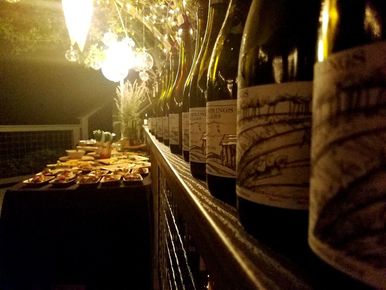
by Patrick Ogle
Tombstone, gun fights, John McCain, Painted Desert, a sheriff who makes inmates wear pink: these are things that might spring to mind when you think of Arizona. You likely don't think about wine. Yet Arizona is up and coming state in the industry. The state has a diverse range of geography,geology, climates and micro-climates.
"There is an amazing amount of diversity. We are also a semi-arid region. Look at where grapes originated--the Middle East. People unfailingly associate growing grapes with Coastal California or even Burgundy." says Eric Glomski, the man behind two of Arizona's most noted wineries--Arizona Stronghold and Page Springs Cellars.
Glomski points out that first the Greeks, then the Romans and Celts selected cold hardy grapes but then, and up until this day, most wine is still grown in hot, dry places. He worked in landscape ecology before devoting himself to wine so he knows of what he speaks.
When it comes to Arizona Glomski makes a bold claim.
"Id argue we have the best micro-climates in the USA." he says.
Tombstone, gun fights, John McCain, Painted Desert, a sheriff who makes inmates wear pink: these are things that might spring to mind when you think of Arizona. You likely don't think about wine. Yet Arizona is up and coming state in the industry. The state has a diverse range of geography,geology, climates and micro-climates.
"There is an amazing amount of diversity. We are also a semi-arid region. Look at where grapes originated--the Middle East. People unfailingly associate growing grapes with Coastal California or even Burgundy." says Eric Glomski, the man behind two of Arizona's most noted wineries--Arizona Stronghold and Page Springs Cellars.
Glomski points out that first the Greeks, then the Romans and Celts selected cold hardy grapes but then, and up until this day, most wine is still grown in hot, dry places. He worked in landscape ecology before devoting himself to wine so he knows of what he speaks.
When it comes to Arizona Glomski makes a bold claim.
"Id argue we have the best micro-climates in the USA." he says.
Born in Illinois Glomski grew up in Boston and went to college in Arizona at Prescott College. He fell in love with the Southwest but left to learn winemaking in California with Limerick Lane and David Bruce Winery.
"I worked my way up from cellar rat to co-winemaker in the late 1990s." says Glomski.
His love of the Southwest led him back to Arizona. He is involved in three different Arizona winemaking endeavors; Page Springs Cellars, Arizona Stronghold and his newest, low cost company, Provisioner. All of these produce all sorts of wines but with an accent on Rhone varietals.
"We are Rhone-centric but are getting more into Bordeaux." says Glomski.
Some of the clones they use for their wines are from the University of California (Davis)'s Foundation Plant Services (especially disease free and modern clones). They also use ENTAV (aka Etablissement National Technique pour l’Amelioration de la Viticulture) grapes. As can be guessed from the name ENTAV is a French organization that sell through a handful of licensed nurseries in the USA. Without going into excruciating detail these are both sources for quality
vines and, therefore quality wines.
One reason Arizona is "Rhone-centric" is that there are similarities to the Rhone; these are both real and superficial.
"If anything we are finding out sites look the same but are not." says Glomski.
One difference is that there are far more extreme diurnal temperature shifts in Arizona. The difference between Arizona and France goes beyond night to day changes in warmth.
"We go up in elevation to 3500 to 5500 feet, which, by European standards is pretty high." he says.
Many Arizona vineyards are in valleys that can have really cold nights and are frost prone. Frost is a bad thing for wine grapes pretty much anytime in their life. Glomski notes that cold air settles and the trick is to plant vines just above the cold air line in a valley. Easy to say but not always easy to do. Spring frost may, according to Glomski, the biggest obstacle to growing wine grapes in Arizona. Finding the sweet spot has led growers to plant in different places experimentally.
"We are still a young industry. We have some things nailed but we also screwed a lot of things up. Those of us who have spent time in Europe see there are similarities with the Rhone Landscape and also with Spain," he says. "But we are
expanding beyond these. It has taken us years and years and I am doing things completely differently. You learn lessons and hope you don't go bankrupt."
With all the differences from the Old World, and specifically the Rhone Valley, Glomski adds that they do produce a "classic Rhone-style syrah."
"I worked my way up from cellar rat to co-winemaker in the late 1990s." says Glomski.
His love of the Southwest led him back to Arizona. He is involved in three different Arizona winemaking endeavors; Page Springs Cellars, Arizona Stronghold and his newest, low cost company, Provisioner. All of these produce all sorts of wines but with an accent on Rhone varietals.
"We are Rhone-centric but are getting more into Bordeaux." says Glomski.
Some of the clones they use for their wines are from the University of California (Davis)'s Foundation Plant Services (especially disease free and modern clones). They also use ENTAV (aka Etablissement National Technique pour l’Amelioration de la Viticulture) grapes. As can be guessed from the name ENTAV is a French organization that sell through a handful of licensed nurseries in the USA. Without going into excruciating detail these are both sources for quality
vines and, therefore quality wines.
One reason Arizona is "Rhone-centric" is that there are similarities to the Rhone; these are both real and superficial.
"If anything we are finding out sites look the same but are not." says Glomski.
One difference is that there are far more extreme diurnal temperature shifts in Arizona. The difference between Arizona and France goes beyond night to day changes in warmth.
"We go up in elevation to 3500 to 5500 feet, which, by European standards is pretty high." he says.
Many Arizona vineyards are in valleys that can have really cold nights and are frost prone. Frost is a bad thing for wine grapes pretty much anytime in their life. Glomski notes that cold air settles and the trick is to plant vines just above the cold air line in a valley. Easy to say but not always easy to do. Spring frost may, according to Glomski, the biggest obstacle to growing wine grapes in Arizona. Finding the sweet spot has led growers to plant in different places experimentally.
"We are still a young industry. We have some things nailed but we also screwed a lot of things up. Those of us who have spent time in Europe see there are similarities with the Rhone Landscape and also with Spain," he says. "But we are
expanding beyond these. It has taken us years and years and I am doing things completely differently. You learn lessons and hope you don't go bankrupt."
With all the differences from the Old World, and specifically the Rhone Valley, Glomski adds that they do produce a "classic Rhone-style syrah."
Page Springs Cellars, in particular, is a great place to visit--find out more HERE.
All three of the brands Glomski is involved with have a different approach historically. Page Springs started first then came Arizona Stronghold, as a partnership with Maynard James Keenan of the band Tool. Arizona Stronghold was a co-project with Keenan with the wines made out of Page Springs.
"Page Springs stayed small and esoteric with a large wine club; 95 percent to consumers and five percent distributed in Arizona." he says.
Arizona Stronghold had a meteoric rise. Glomski and Keenan even went on a tour to promote the wine.
"In San Diego in four hours we sold $65,000 worth of wine. We built the label around Maynard's celebrity. I was burning out from fast pased rock star lifestyle. Arizona Stronghold grew for awhile but collapsed because it was built on something other than wine. I felt we'd neglected the core--growing Arizona wine, selling in Arisona and growing the business and expanding organically."
Keenan and Glomski split up their partnership with Keenan taking a vineyard in the South of Arizona and starting Caduceus Cellars. Glomski shrank distribution of Arizona Stronghold to three or four states to rebuild the brand.
Provisioner is Glomski's low cost label with the aim of producing wines for $10 a bottle and under. Many producers around the world have multiple brands that focus on different parts of the wine market. New areas, especially those that are not associated with winemaking, often have wines that cost more than comparable wines from well known areas. Having wines in a variety of price ranges help an area develop.
Developing Arizona is Glomski's primary aim. He says he feels that they were making good wine from the get go but that making great wine is a trickier thing. A lot of it has to do with growing great grapes.
"Getting wine into B+ or A- categories is doable. Getting to A+ is in the details." he says.
Managing canopies (the plants themselves), learning organic and biodynamic practices and working with native yeasts are all part of these details.
"Refining the process, making with that is a unique expression of the place takes a longer time," says Glomski. "If you have basic skills you can make good wine but to make great wine? It is a lifelong pursuit, maybe a generational pursuit."
This pursuit of perfection in wine, the artistry of wine is sometimes more the ideal than reality.
"When you are trying to pay bills you are not thinking about being artistic." he says.
Two wines from Page Springs have received ratings over 90 from wine magazines, a feat no one had managed up to that point: Page Springs Cellars 2010 Colibri Vineyard syrah (cline 174) and Burning Tree Cellars 2010 Colibri syrah (clone 99). The latter wine was grown and produced for Burning Tree at Page Springs.
Glomski says that Arizona still needs time to find its place in the wine industry. The U.S. wine industry, as it exists, is young compared to Europe but it has far more freedom. The rules for making wine are open here. While nothing is a sure thing Arizona has everything to become a small but significant part of the USA's wine industry.
"Page Springs stayed small and esoteric with a large wine club; 95 percent to consumers and five percent distributed in Arizona." he says.
Arizona Stronghold had a meteoric rise. Glomski and Keenan even went on a tour to promote the wine.
"In San Diego in four hours we sold $65,000 worth of wine. We built the label around Maynard's celebrity. I was burning out from fast pased rock star lifestyle. Arizona Stronghold grew for awhile but collapsed because it was built on something other than wine. I felt we'd neglected the core--growing Arizona wine, selling in Arisona and growing the business and expanding organically."
Keenan and Glomski split up their partnership with Keenan taking a vineyard in the South of Arizona and starting Caduceus Cellars. Glomski shrank distribution of Arizona Stronghold to three or four states to rebuild the brand.
Provisioner is Glomski's low cost label with the aim of producing wines for $10 a bottle and under. Many producers around the world have multiple brands that focus on different parts of the wine market. New areas, especially those that are not associated with winemaking, often have wines that cost more than comparable wines from well known areas. Having wines in a variety of price ranges help an area develop.
Developing Arizona is Glomski's primary aim. He says he feels that they were making good wine from the get go but that making great wine is a trickier thing. A lot of it has to do with growing great grapes.
"Getting wine into B+ or A- categories is doable. Getting to A+ is in the details." he says.
Managing canopies (the plants themselves), learning organic and biodynamic practices and working with native yeasts are all part of these details.
"Refining the process, making with that is a unique expression of the place takes a longer time," says Glomski. "If you have basic skills you can make good wine but to make great wine? It is a lifelong pursuit, maybe a generational pursuit."
This pursuit of perfection in wine, the artistry of wine is sometimes more the ideal than reality.
"When you are trying to pay bills you are not thinking about being artistic." he says.
Two wines from Page Springs have received ratings over 90 from wine magazines, a feat no one had managed up to that point: Page Springs Cellars 2010 Colibri Vineyard syrah (cline 174) and Burning Tree Cellars 2010 Colibri syrah (clone 99). The latter wine was grown and produced for Burning Tree at Page Springs.
Glomski says that Arizona still needs time to find its place in the wine industry. The U.S. wine industry, as it exists, is young compared to Europe but it has far more freedom. The rules for making wine are open here. While nothing is a sure thing Arizona has everything to become a small but significant part of the USA's wine industry.
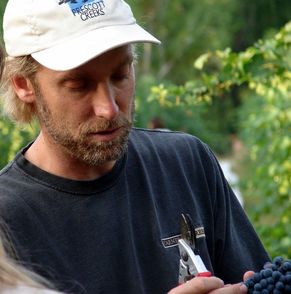
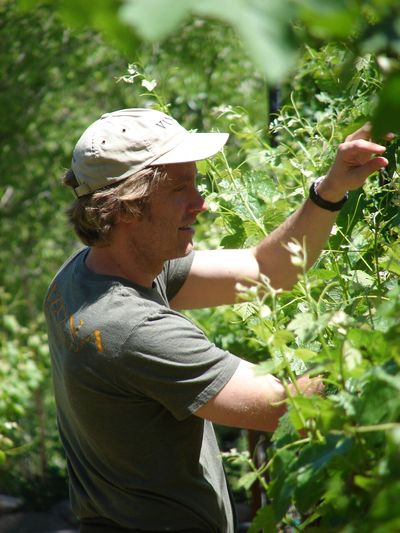
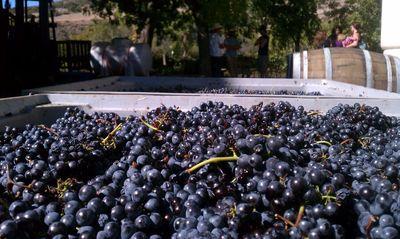
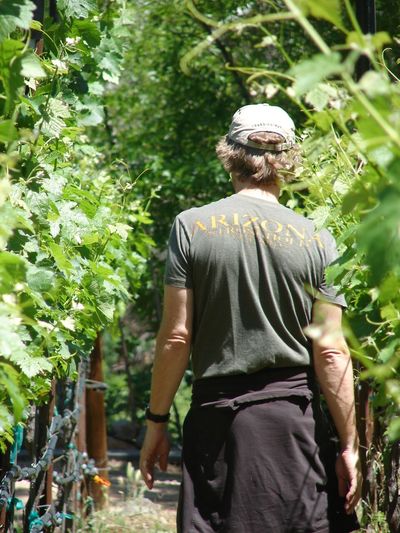
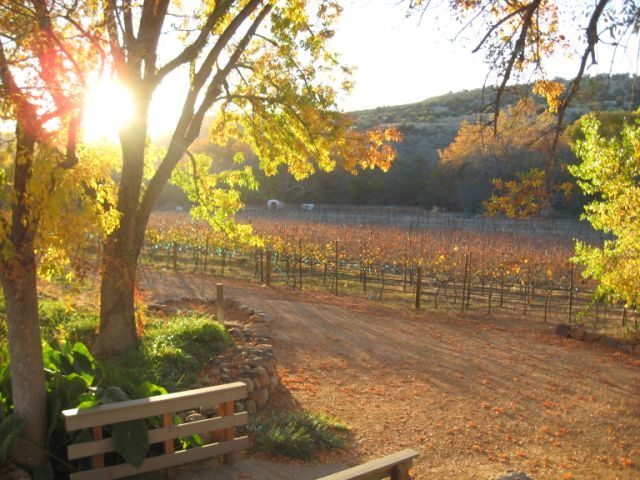
 RSS Feed
RSS Feed